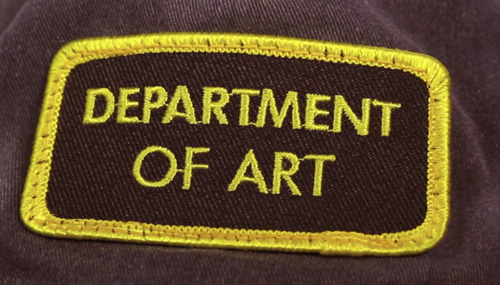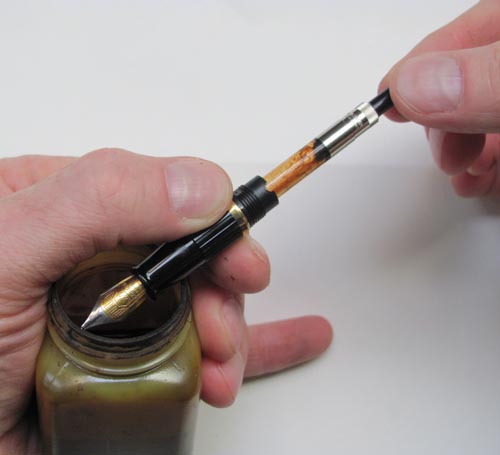We received an overwhelming response to the challenge to paint a graveyard on location in a limited palette. There were dozens of entries on the Facebook event page from all over the world, including Taiwan, New Zealand, South Africa, Europe, Mexico, and all over the USA and Canada.
Some of you painted outside for the first time, or with gouache for the first time, or it was first time out with a limited palette. Some went out with other painters or with members of your family. Some of you painted the graves of your relatives. Some overcame real fears and found a peaceful mood.
Congratulations and thanks to everyone who took part! Following is the Grand Prize winner and the six Finalists. It was really hard to decide because there were so many excellent entries.
Grand Prize Winner: Garrett Eaton
Location: Mountain View Cemetery in Oakland, CA, which was designed by Fredrick Olmsted (the guy who designed Central Park).
Palette: Gouache -- Cadmium Yellow Lemon, Ultramarine Light, Burnt Sienna, and Permanent White.
Artist's comment: Because of its age, many stones are broken and haphazardly lie about; this is what I chose to paint. The light changed significantly over the course of the painting and as a result, my sketch is an amalgam of multiple lighting conditions. Didn't quite get the shadow depth completely.
My comment: Wow, when I was a student I lived just a few miles from this graveyard and never knew about it. Really nice job of color, composition, and lighting.
Artist: Tobias Gembalski
Location: "Stadtgottesacker", Halle/Saale, Germany
Palette: Gouache -- black, Paris blue, raw sienna and white.
Artist: Ian Bosworth
Location: Mabe church in Cornwall, UK.
Palette: Gouache--Ivory black, Raw sienna and a touch of Indian red.
My comment: Super job. It was a good choice to go with the black to get that maximum contrast. I don't miss seeing the blue colors at all. Wonderful depth between the cropped foreground and the far fields.
Location: Non-Catholic Cemetery of Rome, Italy.
My comment: Sargent palette! I like the way you blended the colors wet-into-wet in the shadows.You added so much life and energy to what was there.
Palette: Noodlers Lexington grey ink, Permanent Rose and Quinacridone Gold.
Artist's comment: It was installed in the 1930s, and is a grimly fascinating object to study, an industrial 'memento mori'! It provoked a range of reactions from the other visitors, including an awed 'Wow' from a Goth couple. My wife's family is from the area and there's a possibility her granddad might have passed through its portal.
Artist's comment: I always liked a certain sculpture on a cemetery in the middle of the city called "Stadtgottesacker". The whole place is beautiful, but it had to be this sculpture. Today I went there to paint this challenging motif. It took me around four hours. The text says: Aliis inserviendo consumor - In serving others, I consume myself.
My comment: Beautiful design and color, well drawn, and fascinating text.
Artist: Karen Winslow
Location: Mountainview Cemetery in Cambridge, Vermont.
Palette: Oil, cadmium yellow light, Perylene red, and Delft blue, plus white.
My comment: I liked the mixture of soft edges and crisp details, and the beautiful grays you got in the background, and the shadowed foreground. Also I was so impressed by the other painting you did by moonlight, Karen!
Artist: Ian Bosworth
Location: Mabe church in Cornwall, UK.
Palette: Gouache--Ivory black, Raw sienna and a touch of Indian red.
Artist's comment: Never painted a cemetery before but I quite enjoyed it!
Artist: Massimiliano Iocco
Palette: Watercolor -- Burnt sienna, French Ultramarine blue and Yellow ochre.
Artist: Michael Mrak
Location: Basking Ridge, New Jersey
Palette: Gouache-- Gamboge, Vermilion, and Ultramarine Blue. Plus white.
Artist's comment: I had never been to this graveyard before but I was looking for one that was 'historic'. The big maple hadn't started turning yet, but the light was great. Next time I'll need to remember to dress warmer.
My comment: Your painting really gives the feeling of standing there. I like the way the stones seem to be congregated around the tree. The tree looks as ancient as the graves.
Artist: Ed Mostly
Location: Decommissioned crematorium oven on display at Arnos Vale, a large cemetery in Bristol, UK. Palette: Noodlers Lexington grey ink, Permanent Rose and Quinacridone Gold.
Artist's comment: It was installed in the 1930s, and is a grimly fascinating object to study, an industrial 'memento mori'! It provoked a range of reactions from the other visitors, including an awed 'Wow' from a Goth couple. My wife's family is from the area and there's a possibility her granddad might have passed through its portal.
My comment: Yikes, it has a face! I love the subtle grayness of your color and value choices.
-----
-----

To the winner and finalists, please email me your mailing address so that I can send you a "Department of Art" embroidered patch. You can find my contact info on the bottom left column of the blog.
To all who participated, and who added likes and comments to the pages, thank you! It really had the feeling of camaraderie that comes from a group paint-out, without the distraction of entry fees and auctions.















































